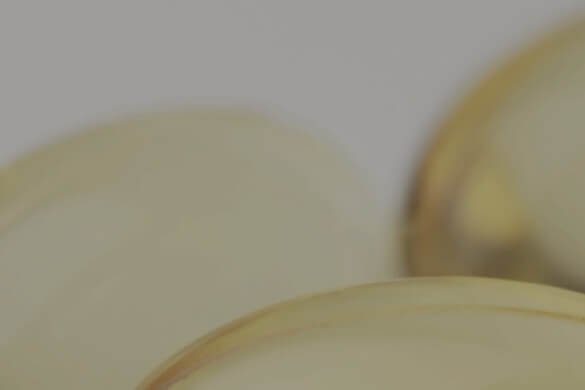
Eye Cream
For a more radiant eye area
hyapur® GREEN Eye Cream
- provides hydration and nutrients to the sensitive eye area
- helps reduce fine lines and tauten skin
- with organic-grade natural ingredients
Additional information
| Weight | 0,049 kg |
|---|---|
| Dimensions | 5 × 5 × 8 cm |
| Size | 15ml / 0.5 fl.oz |
56,00€ incl. VAT
373,34€ / 100 ml
Description
Bring back the radiance around your eyes. Featuring shea butter, aloe vera and hyaluronic acid, the rich eye cream helps maintain the elasticity, vitality and firmness of the sensitive eye area. For fewer fine lines and a natural glow. With organic-grade natural ingredients. Vegan-friendly.
Ingredients
- Shea butter is known for its conditioning and moisturizing properties.
- Hyaluronic acid binds moisture, helps improve elasticity and makes skin appear plumper.
- Aloe vera hydrates.
Application
Apply a small amount in the eye area morning and night after cleansing with GREEN Cleansing Milk and GREEN Tonic Sensitive. Follow with GREEN Day or Night Cream (leaving out the eye area).
ORDER OF USE
Your hyapur® order of use
Cleansing Milk
removes makeup, impurities and skin cells
Tonic Sensitive
improves pH balances, removes excess dirt
Pure Hyaluronic Intense Serum
provides skin with hyaluronic acid, making it firmer, more elastic and reducing wrinkles
or
Hyaluronic Algae Serums
the solution for specific skin care needs
or
Hyaluronic Acid Ampules
suppler and plumper looking skin, quickly
Hydrating Fluid, Day or Night Cream
counteracts natural moisture loss and delivers targeted skin care effects
Specialty Care
Peeling (1-2x/week)
Algae Gel (1-2x/week)
Specialty Care
Eye Cream (1-2x/day)
Moisturizing Mask (1-2x/week)
Best friends
These hyapur® products are the perfect company


Pure Hyaluronic Intense Serum
With only 3 ingredients to firmer, smoother skin.
29,00€ - 318,00€ incl. VAT
learn more
GREEN Series Sets
You can also find our Eye Cream in the following sets
GREEN complete + 50ml Serum

Radiantly beautiful, naturally.
588,00€ incl. VAT
588,00€ / Set
Natural fullness, gentle and radiant
Just like wind, sun, rain and cold leave marks in rocks and trees, our skin is sensitive to the elements and time as well. Fine lines and wrinkles begin to form and are exacerbated by various factors.
Our regenerating GREEN Eye Cream helps to naturally carry the burden of time. It conditions the sensitive eye area with natural oils, maintains elasticity and vitality and helps firm it with aloe vera, hyaluronic acid and vitamin E. For less fine lines and a more radiant eye area.
So that our eye area can regenerate. All naturally.
When to use
Made from the nuts of the karité tree, shea butter contains numerous skin-loving ingredients such as omega 3 fatty acids, vitamin E and allantoin, and is particularly skin-compatible.
About us
hyapur® Berlin was founded in 2009 with the precept that cosmetics should contain only a few, but highly concentrated and pure active ingredients.
Today, our serums, skin and body care products based on the anti-aging ingredient hyaluronic acid delight customers at home and professionals in renowned SPAs worldwide with their pure effectiveness.
Discover your new favorites right here at hyapur.com.











Questions & Answers
Tags
[gravityform id=”1″ title=”false” description=”false”]
© 2025 Hyapur Deutschland







